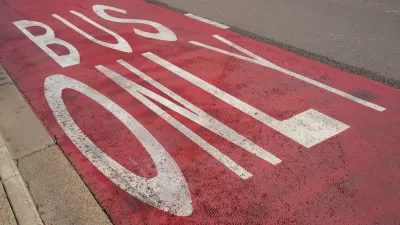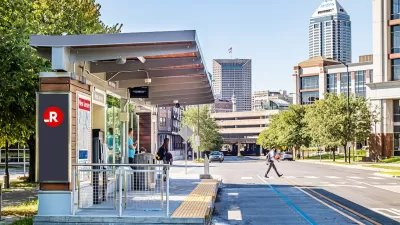This interview with Walter Hook, director of the Institute for Transportation and Development Policy, probes the merits of Bus Rapid Transit versus subways and light rail. The first of four installments.
"WH: Like in many places, people in the U.S. associate buses with people of lower social status. Where there has been significant money available for public transport, it is put into core-commuter focused rail transit lines that usually provide disproportionate benefits to the upper middle classes, while the poor -- who make much higher use of transit for all their travel -- have much less invested in the bus services that they need. Interestingly enough, in Mexico City -- where there is a full featured, real BRT system -- the rich are willing to take the BRT, but they won't take the metro, which has more crime and is rapidly deteriorating -- the same historic phenomenon as the U.S. but in reverse!
Of course, you can mess up a BRT system, and Boston's Silver Line proved that you could waste almost as much money on BRT as you can on a rail system. Many of the BRT systems we've worked on are nowhere near as good as TransMilenio. For mainly political reasons, the risk of BRT being something far from optimal is pretty big, even here in New York City.
It's important to the world that New York City doesn't just build some low-quality bus improvement and call it BRT. This could really damage the already poor reputation of BRT as a serious mass transit option in the U.S. But what if New York were to hit it out of the park, with something amazing? The rest of the world expects no less from the greatest city in the world."
FULL STORY: BRT, Rail, and New York City: A Conversation With Walter Hook

Manufactured Crisis: Losing the Nation’s Largest Source of Unsubsidized Affordable Housing
Manufactured housing communities have long been an affordable housing option for millions of people living in the U.S., but that affordability is disappearing rapidly. How did we get here?

Americans May Be Stuck — But Why?
Americans are moving a lot less than they once did, and that is a problem. While Yoni Applebaum, in his highly-publicized article Stuck, gets the reasons badly wrong, it's still important to ask: why are we moving so much less than before?

Research Shows More Roads = More Driving
A national study shows, once again, that increasing road supply induces additional vehicle travel, particularly over the long run.

Judge Halts Enforcement of Anti-Homeless Laws in Grants Pass
The Oregon city will be barred from enforcing two ordinances that prosecute unhoused residents until it increases capacity and accessibility at designated camping sites.

Advancing Sustainability in Los Angeles County Schools
The Los Angeles County Office of Education’s Green Schools Symposium brings together educators, students, and experts to advance sustainability in schools through innovative design, climate resilience strategies, and collaborative learning.

Using Old Oil and Gas Wells for Green Energy Storage
Penn State researchers have found that repurposing abandoned oil and gas wells for geothermal-assisted compressed-air energy storage can boost efficiency, reduce environmental risks, and support clean energy and job transitions.
Urban Design for Planners 1: Software Tools
This six-course series explores essential urban design concepts using open source software and equips planners with the tools they need to participate fully in the urban design process.
Planning for Universal Design
Learn the tools for implementing Universal Design in planning regulations.
City of Moreno Valley
Institute for Housing and Urban Development Studies (IHS)
City of Grandview
Harvard GSD Executive Education
NYU Wagner Graduate School of Public Service
City of Cambridge, Maryland
Newport County Development Council: Connect Greater Newport





























